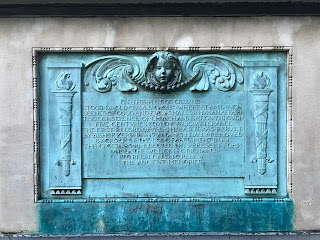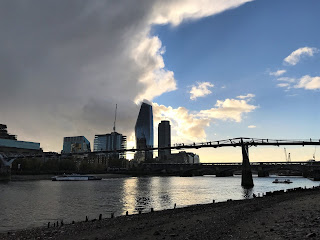St Paul’s Churchyard is one of those places in the centre of London where you can escape from the chaos of the busy streets nearby. A place to relax, contemplate life, or just sit and drink a cup of tea from one of the many nearby cafés.
The churchyard wasn’t always such a relaxing
place though. It was once a place of
much hustle and bustle, with markets selling cloth and other goods, booksellers
selling books and shops selling music and musical instruments. Large crowds also gathered there on one
occasion to watch the execution of one of the conspirators in the Gunpowder
Plot, Father Henry Garnet. He suffered
the rather unpleasant fate of being hung drawn and quartered.
From the mid-15th Century to
around 1635 St Paul’s Cross stood in the churchyard. This was an open air pulpit and cross from
which many sermons were preached and where large crowds gathered to hear them. During
the Reformation it became an important place for the government to put forth the
religious views that they espoused.
The original St Paul’s Cross is long
gone, but it is now commemorated by a monument that stands nearby to where it once
stood.
I left the Skulferatu that accompanied
me during my wander around the churchyard in a hollow in a tree near to the St
Paul’s Cross monument.
The coordinates for the location of the Skulferatu
are –
Latitude 51.514174
Longitude -09.097577
I used the following sources for
information on St Paul’s Churchyard -
British History Online
St Paul's: The
churchyard | British History Online
Wikipedia

































